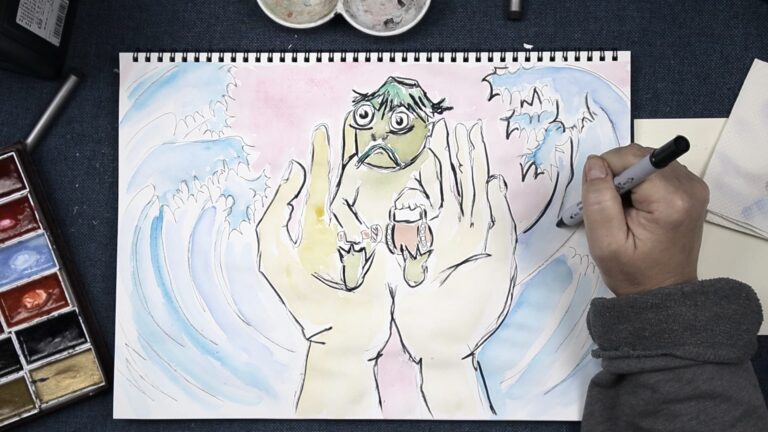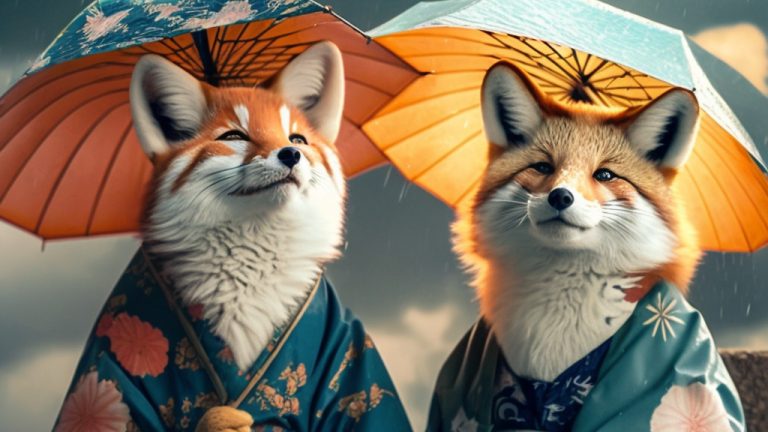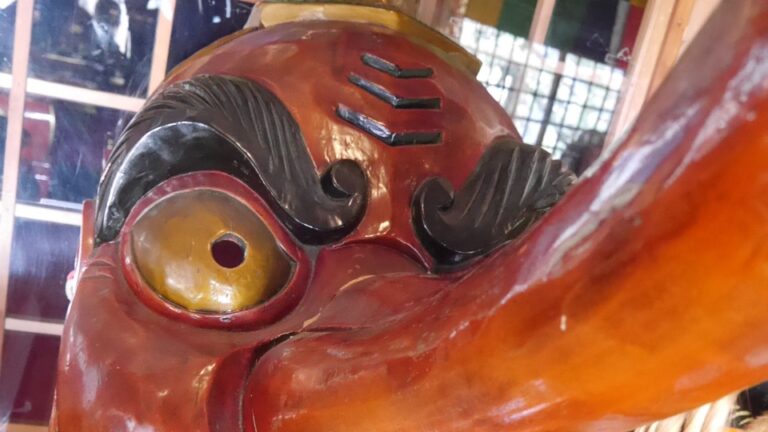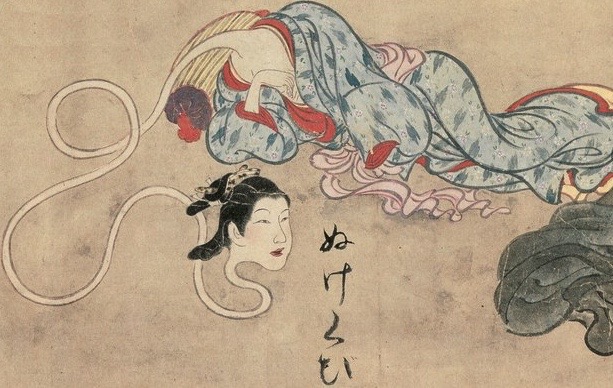The obscure and terrifyingly deadly yokai, the korori, ravaged Edo Japan. On today’s episode I’ll tell you all about it, what it really was and how foreigners were the ones who brought it to Japan.
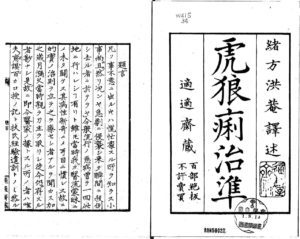
Hey hey, I’m Thersa Matsuura and you’re listening to Uncanny Japan.
I’m going to take a wild guess and say that you might be partial to Japanese beasties, especially youkai. And I’m also going to guess that you know all about the kappa, the oni, and the tengu and probably even the tofu kozo and the kara kasa obake.
But let me have a show of hands, how many have ever heard of the korori? Here’s a hint: the name consists of three characters, Ko (虎) is the kanji for tiger. Ro (狼) is for wolf. And ri (狸) means tanuki. Tiger. Wolf. Tanuki.
Does it sound familiar? Not at all? Are you asking yourself, what can this korori be? What does it look like? What does it do? Well, I’ll tell you all about that and more in today’s show. Surprise! That was the new intro. What did you think? The music was made by my son Julyan, who I’ve probably talked about here sometimes. I think he nailed my ambiguous request for something haunting, flutey, with a vague otherworldly but unmistakable Japan vibe. He’s for hire if you want, too. Just let me know. I mean, to hire to make intro/outros, music beds, music for games, etc. Not hire to mow your lawn or anything. Although I could ask.
An update on the New Jersey Web Fest. We lost! But that’s okay. We’re cool with it. Those were some big fishes and it was nice to be in the same pond as them for awhile.
So we’ve got a big old Category 5 typhoon headed straight for us, so let me get started with today’s show before shutters go flying and windows break. But right now, that ambience you hear behind me is a four am walk from my house and along the river. Water, birds, and if you’re lucky, the extremely close to the mics zooming insect.
When Was Korori Popular?
Today’s topic is a perfect example of me doing research for a story and unearthing this new to me — and quite obscure — youkai.
We already know it’s called a korori and the kanji means tiger, wolf, tanuki. But what else?
While it was around a little earlier — as you’ll learn about in a second — it really gained attention suddenly during the Edo Era, especially in the capital of Edo. It was actually a disease causing youkai. Which we don’t have a lot of, I don’t think.
Disease Bringing Yokai
Most youkai as we know them might wreak a little havoc. The wily kappa grab people and farm animals and drown them, oni have great iron clubs that they use to terrorize people, and tengu wield fans they use to rouse up storms, or they’ll just snatch you up and disappear you to some other land for awhile. But do we know of a youkai that makes people sick? Why would people associate a disease with a specific youkai?
The God of Smallpox
Well, we did talk about the housou-gami or Smallpox God or Demon? I’m thinking that was in episode 18: The God of Smallpox. But the Housougami wasn’t exactly a youkai. It was more, full on demon. But both it and the korori did cause a lot of death and heartbreak.
Now, are you ready to have your mind blown? The disease that the Korori caused is in fact cholera. Korori, cholera. Sounds similar.
What is Cholera?
Before I go on, a tiny bit about cholera, the basics, and not getting too gross. It’s basically acute diarrhea and vomiting that are caused by ingesting food or water that has been contaminated with the bacteria Vibrio Cholerae. This leads to severe dehydration and often death.
It’s also still a global threat today with anywhere from 1.3 to 4 million cases a year and between 21,000 to 143,000 deaths. So this isn’t something like smallpox that has been eradicated by vaccines. It’s still around and it is closely linked to inadequate access to clean water and sanitation facilities. Left untreated it can kill within hours.
So there was no cholera in very early Japan, it seems. Here’s what’s thought to have happened. Cholera was endemic only in the Ganges Delta. But as Britain entered the picture and began trading all over Asia the disease spread.
First Came to Japan
It first made its way to Japan in 1822 when it traveled from China through Okinawa, then called the Ryukyu islands to Kyushu, next hopping over to the main island of Honshu. It killed a whole bunch of people in Western Japan, but didn’t make it up to the Edo capitol.
Next Came to Japan/Black Ships
It was a little more than thirty years later, in 1858 when Commodore Perry arrived with his Black Ships. He forced Japan to open its borders and sign some unfair trade deals. And to add insult to injury, he also brought an extremely deadly disease with him. Remember at that time Edo had a population of around one million people and was one of the largest cities in the world.
It’s believed that some crew members on the ship the USS Mississippi had cholera. A steward of a physician on that ship, a Mr. William Gragg, recorded that there was an epidemic form of diarrhea that broke out two days after leaving Hong Kong for Japan. So it’s an educated guess they had picked up the disease in Hong Kong and carried it with them. The disease being as contagious as it is, well, things got bad.
Wanna hear something really sad? This Mr. Gragg also wrote that the the Japanese felt sorry for them and allowed some of the sick men to come ashore to recover. They were being kind to these pushy strangers and look what it got them. It’s estimated that between 100,000 to 300,000 people died from the disease during that bout.
Utagawa Hiroshige
You know Utagawa Hiroshige, the ukiyoe artist who carved the famous for the Fifty Three Stations of Tokaido? (ETA: I mistakenly attributed Hiroshige to The Wave on the podcast). He’s believed to be one of the casualties, too. And it gets worse. Those black ships then moved on and spread the disease to other ports farther north.
Tiger Wolf Diarrhea
Remember how korori is written with the three characters for tiger wolf and tanuki? Well, there’s another writing of the word with instead of tanuki, the character for diarrhea is used. This was how a physician named Ogata Kooan wrote it on the cover of a handbook he penned on how to treat the illness. Tiger. Wolf. Diarrhea (虎狼痢)
But where does the youkai fit it? I guess you have to imagine the poor Japanese. Suddenly all their friends and family are falling ill and dying of this horrid disease. Something they had never seen before. Because they didn’t understand what was happening, they tried to make sense of it. Hence making up this awful new youkai, the korori.
Maybe a Mishearing?
I didn’t read this, but I’m going to go out on a limb here and guess that someone heard one of the sailors call it cholera. Perhaps that got whispered around, became korori and then the characters were attached to it later. That’s called ateji (当て字), by the way. When you have a word in Japanese and use Japanese character to purposefully give it a certain meaning. And example being the word kurabu (クラブ・倶楽部). It comes from the English word club. Which doesn’t have kanji characters, but the ateji is ku (倶) together, ra (楽) fun, bu (部), place.
The Yokai Appears
Anyway, this legend might have started when a man in Edo got sick, got better, but afterward saw a strange weasel like creature creeping around. He’d never seen anything like it before. A korori? Well, maybe, but we’ll never know because he beat it to death with a piece of firewood, roasted it and ate it.
There was another man who had gotten sick in the same village who also saw one of the beasts leaving his house. And then after that suddenly there were all these people who witnessed a korori jumping out of the bodies of people who had died of cholera. So youkai, it was!
Nishiki-e Newspaper
In the Meiji Period there was a newspaper of sorts called the Nishiki-E Shinbun. Here on September 21st, 1877 there was a story about a Kororiju, the ju part means monster or beast, just like in Kaiju. Anyway, it looked like a tanuki but with a pattern on its fur, like a tiger. The article then went on to say while it isn’t a real beast, but if you do see one remember how horrible and devastating the disease of cholera is.
So now you can impress your youkai-loving friends with a beastie they most likely have never heard of. A korori. One you don’t want to come face to face with.
Korori Trivia
Okay, before I let you go, my favorite bit of trivia about the Korori: Korori is also a word that means to drop dead suddenly. Which ironically sounds like the cholera korori. If a korori yokai got you, people would say you’d: mikka korori, you’d probably drop dead after three days. That’s how terrifying the illness was. And don’t forget, in some parts of the world, still is.
Thank you for listening. We’re up to 251 patrons. Ever closer to my goal of 300 by the end of the year. Yay! Next two episodes are going to be of the spooky variety so gird your loins for those!
Also, ready for new outro? Listen to the end. I just love that last sustaining note.
Credits
Intro and outro music by Julyan Ray Matsuura.
Taiko Warrior by Marron Fields Production

